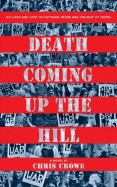| Please login or create a free account to submit a review |
| The Time Machine Contributor(s): Wells, H. G. (Author) |
|||
 |
ISBN: 1490946438 ISBN-13: 9781490946436 Publisher: Createspace Independent Publishing Platform
Binding Type: Paperback - See All Available Formats & Editions Published: July 2013 * Out of Print * |
||
| Additional Information | ||||||||||||||||||||||||
| BISAC Categories: - Young Adult Fiction | Classics | ||||||||||||||||||||||||
| Dewey: FIC | ||||||||||||||||||||||||
| Age Level: 10-17 | ||||||||||||||||||||||||
| Grade Level: 5-12 | ||||||||||||||||||||||||
| Physical Information: 0.16" H x 6" W x 9" L (0.26 lbs) 78 pages | ||||||||||||||||||||||||
| Descriptions, Reviews, Etc. |
||||||||||||||||||||||||
| Publisher Description: The Time Machine is a science fiction novella by H. G. Wells, published in 1895 and later adapted into two feature films of the same name, as well as two television versions, and a large number of comic book adaptations. It indirectly inspired many more works of fiction in many media. This story is generally credited with the popularisation of the concept of time travel using a vehicle that allows an operator to travel purposefully and selectively. The term "time machine", coined by Wells, is now universally used to refer to such a vehicle. This work is an early example of the Dying Earth subgenre. Wells had considered the notion of time travel before, in an earlier work titled The Chronic Argonauts. This short story was published in his college's newspaper and was the foundation for "The Time Machine." Wells frequently stated that he had thought of using some of this material in a series of articles in the Pall Mall Gazette, until the publisher asked him if he could instead write a serial novel on the same theme; Wells readily agreed, and was paid 100 (equal to about 9,000 today) on its publication by Heinemann in 1895. The story was first published in serial form in the January to May numbers of The New Review (newly under the nominal editorship of W. E. Henley). The story reflects Wells's own socialist political views, his view on life and abundance, and the contemporary angst about industrial relations. It is also influenced by Ray Lankester's theories about social degeneration, and share many elements with Edward Bulwer-Lytton's novel Vril. Other science fiction works of the period, including Edward Bellamy's Looking Backward and the later Metropolis, dealt with similar themes. Significant scholarly commentary on The Time Machine began from the early 1960s, initially contained in various broad studies of Wells's early novels (such as Bernard Bergonzi's The Early H.G. Wells: A Study of the Scientific Romances) and studies of utopias/dystopias in science fiction (such as Mark R. Hillegas's The Future as Nightmare: H.G. Wells and the Anti-Utopians). Much important critical and textual work was done in the 1970s, including the tracing of the very complex publication history of the text, its drafts and unpublished fragments. A further resurgence in scholarship came around the time of the novel's centenary in 1995, and a major outcome of this was the 1995 conference and substantial anthology of academic papers, which is collected in print as H.G. Wells's Perennial Time Machine: Selected Essays from the Centenary Conference, "The Time Machine: Past, Present, and Future" (University of Georgia Press, 2001). This publication then allowed the development of a study guide book (meant for advanced academics at Masters and PhD level), H.G. Wells's The Time Machine: A Reference Guide (Praeger, 2004). The scholarly journal The Wellsian has published around twenty articles on The Time Machine, and the new US academic journal devoted to H.G. Wells, The Undying Fire has published three since its inception in 2002. |
||||||||||||||||||||||||
| Customers who bought this item also bought... | ||||||||||||||||||||||||
| ||||||||||||||||||||||||
| Customer ReviewsSubmit your own review | ||||||||||||||||||||||||
| To tell a friend about this book, you must Sign In First! |







